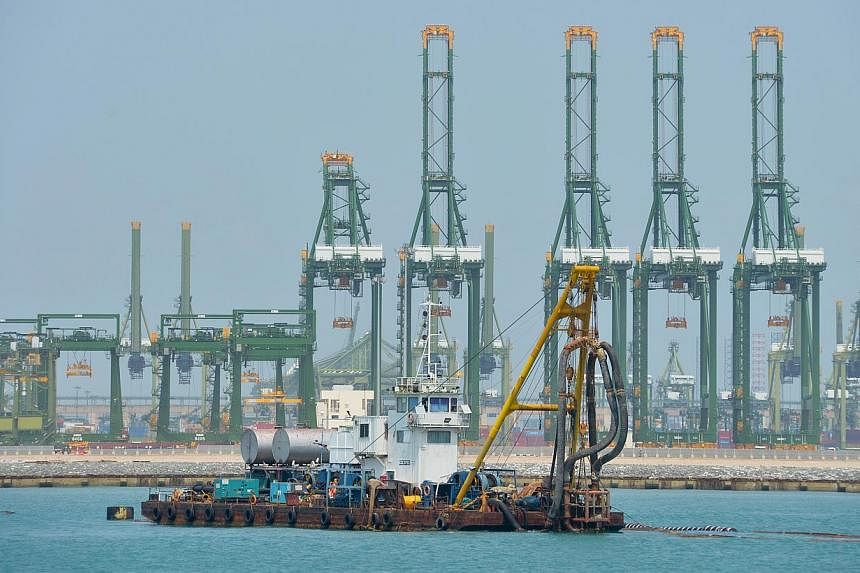LEIPZIG, Germany - Future maritime trade routes such as Arctic shipping lanes could challenge Singapore's position as a global shipping hub, but boosting efficiency and capacity will help the Republic's port stay competitive and relevant.
This could be through automation, such as the use of Automated Guided Vehicles (AGVs) to move containers, said the Maritime and Port Authority's chief executive Andrew Tan on Wednesday.
Currently under trial at Pasir Panjang Terminal, such a system will help tackle the manpower crunch and can boost productivity significantly, said Mr Tan during an interview at the International Transport Forum summit in Leipzig, Germany.
When the Phase 3 and 4 expansions of the terminal are fully operational by the end of 2017, Singapore will also ramp up its container throughput of 33.9 million TEUs (twenty foot equivalent units) to 50 million TEUs. This capacity will be further increased to 65 million TEUs in the future when Tuas Terminal is completed, Mr Tan added.
Interest in Arctic shipping lanes, such as Russia's Northern Sea Route (NSR) which runs across the top of Siberia and can reduce sailing times between Europe and Asia by up to 40 per cent, has elicited concerns that shipping traffic will be diverted from Singapore.
With ice sheets melting and resulting in a longer navigational window during the summer months, the route is said to be faster than the Suez Canal-Malacca Straits link, which Singapore benefits from.
Mr Tan, however, said that it is unlikely that Arctic shipping routes will supplant the Suez Canal and Malacca Straits anytime soon. When travelling to countries in North Asia, the NSR can offer benefits, but the short-cut is negated when travelling further down south and becomes less economical for the Asia-Europe trade, he noted.
"Parts of the weather are also unpredictable, you'll need Russian ice breakers," he said. "There's rhetoric and reality... where Singapore is concerned, we are planning for the long term, putting in place the capacity to handle the larger vessels, making sure we increase the levels of productivity, efficiency."
But beyond the port, the entire maritime sector, from ancillary services to ship broking and finance - which Mr Tan calls the "whole value-chain" - must also be built up, he added.


